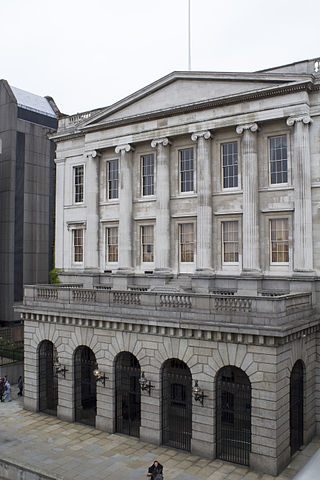
A livery company is a type of guild or professional association that originated in medieval times in London, England. Livery companies comprise London's ancient and modern trade associations and guilds, almost all of which are styled the "Worshipful Company of" their respective craft, trade or profession. There are 111 livery companies in total. They play a significant part in the life of the City of London, not least by providing charitable-giving and networking opportunities. Liverymen retain voting rights for the senior civic offices, such as the Lord Mayor, Sheriffs and Common Council of the City Corporation, London's ancient municipal authority with extensive local government powers.

The Worshipful Company of Grocers is one of the 111 livery companies of the City of London, ranking second in order of precedence.

The Worshipful Company of Goldsmiths, is one of the Great Twelve Livery Companies of the City of London, headquartered at Goldsmiths' Hall, London EC2.
The Worshipful Company of Plaisterers is one of the livery companies in the City of London. The Plaisterers' Company was incorporated under a Royal Charter in 1501 and whilst the spelling used in the charter was "Plaisterer", some later charters used the alternative spelling of "plasterer", nonetheless, the company uses the original spelling.

The Worshipful Company of Vintners, one of the Great Twelve City Livery Companies, retains close links with the wine trade.
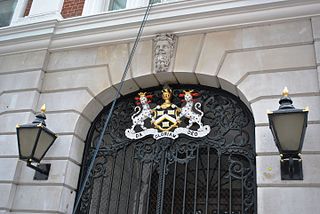
The Worshipful Company of Dyers is one of the Livery Companies of the City of London. The Dyers' Guild existed in the twelfth century; it received a Royal Charter in 1471. It originated as a trade association for members of the dyeing industry but is now mainly a charitable institution. Each year the company participates in the ceremony of Swan Upping along the River Thames.

The Worshipful Company of Ironmongers is one of the Great Twelve livery companies of the City of London, incorporated under a Royal Charter in 1463.

The Worshipful Company of Clothworkers was incorporated by Royal Charter in 1528, formed by the amalgamation of its two predecessor companies, the Fullers and the Shearmen. It succeeded to the position of the Shearmen's Company and thus ranks twelfth in the order of precedence of Livery Companies of the City of London.

The Worshipful Company of Cutlers is one of the ancient Livery Companies of the City of London. It ranks 18th in the order of precedence of the Companies.

The Worshipful Company of Carpenters is a livery company of the City of London. The Carpenters were traditionally different from a fellow wood-crafting company, the Worshipful Company of Joiners and Ceilers, in that carpenters utilised nails while joiners used adhesives to attach wood.
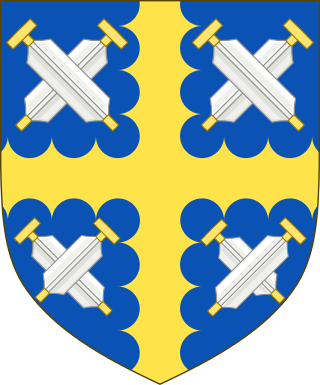
The Worshipful Company of Curriers is one of the ancient livery companies of London, associated with the leather trade.
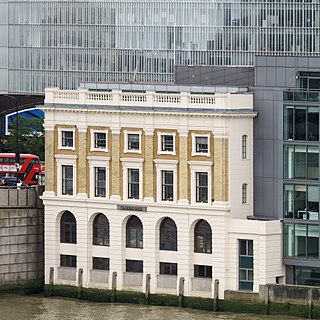
The Worshipful Company of Glaziers and Painters of Glass is one of the livery companies of the City of London. The Guild of Glaziers, or makers of Glass, the company's forerunner, existed as early as the fourteenth century. It received a royal charter of incorporation in 1638. It is no longer a trade association of glass craftsmen, instead existing, along with a majority of livery companies, as a charitable body.
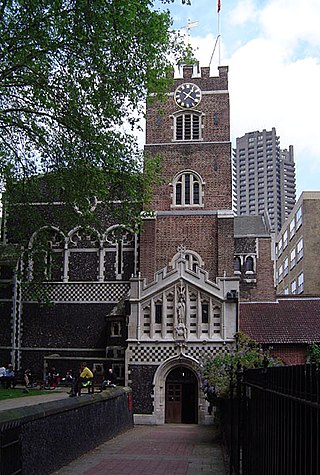
The Priory Church of St Bartholomew the Great, sometimes abbreviated to St-Barts-the-Great, is a mediaeval church in the Church of England's Diocese of London located in Smithfield within the City of London. The building was founded as an Augustinian priory in 1123. It adjoins St Bartholomew's Hospital of the same foundation.
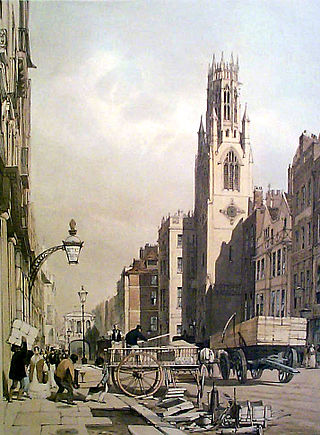
The Guild Church of St Dunstan-in-the-West is in Fleet Street in the City of London. It is dedicated to Dunstan, Bishop of London and Archbishop of Canterbury. The church is of medieval origin, although the present building, with an octagonal nave, was constructed in the 1830s to the designs of John Shaw.
The Worshipful Company of Constructors is one of the Livery Companies of the City of London. The Company aims to bring together those professionally qualified individuals concerned with aspects of building design, execution, management, vision and economic appraisal.

Fishmongers' Hall is a Grade II* listed building adjacent to London Bridge. It is the headquarters of the Worshipful Company of Fishmongers, one of the 111 livery companies of the City of London. The Hall is situated in Bridge ward.

Tower is one of the 25 wards of the City of London and takes its name from its proximity to the Tower of London. The ward covers the area of the City that is closest to the Tower.

Foster Lane is a short street within Cheap ward, in the City of London, England. It is situated northeast of St Paul's Cathedral and runs southbound Gresham Street to Cheapside.

The Merchant Taylors' Hall, London is the seat of the Worshipful Company of Merchant Taylors, one of the Twelve Great Livery Companies of the City of London surviving from Mediaeval times.

Samuel Nixon was a portrait sculptor in London, England.





















